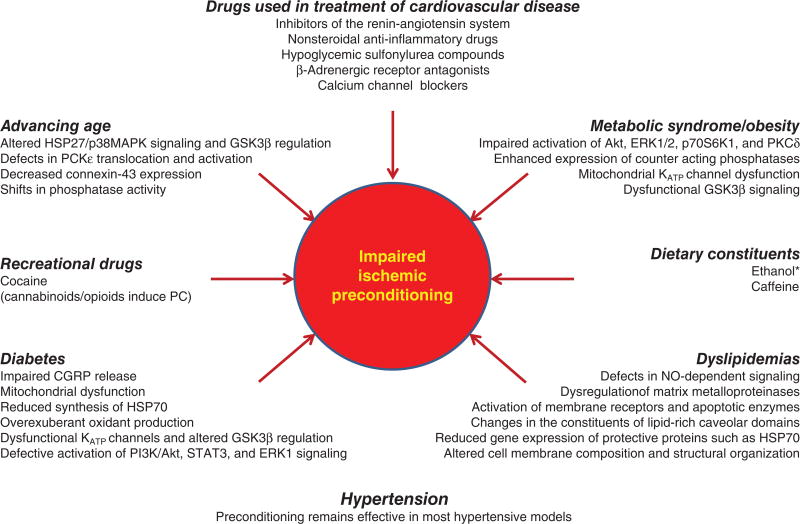Figure 5.
The presence of coexisting risk factors including metabolic syndrome, obesity, diabetes, advancing age, smoking, and dyslipidemias not only increase the likelihood for cardiovascular disease, but also worsen the outcome for those individuals who do suffer a heart attack or stroke. Interestingly, while ischemic and pharmacologic conditioning strategies are remarkably effective in young, healthy subjects, the presence of the aforementioned comorbid factors reduces their cardioprotective effects. The mechanisms underlying the impaired efficacy of conditioning is listed below each of the italicized co-morbid risk factors in the figure. Surprisingly little attention has been devoted to the effect of cigarette smoking to limit the efficacy of conditioning or with regard to the mechanisms by which this impairment occurs. Caffeine consumption also reduces the effectiveness preconditioning, as does the ingestion of alcoholic beverages at high levels, an effect that disappears as the absorbed ethanol is metabolized and eliminated from the blood. While use of some recreational drugs (eg, cocaine) abolishes ischemic preconditioning, morphine (or other opioids) injections or smoking marijuana may induce preconditioned phenotypes via activation opioid and cannabinoid receptors, respectively. It is also important to note that many of the drugs commonly used in the therapeutic management of patients with cardiovascular disease who are at high risk for myocardial infarction or stroke reduce or abolish the effectiveness of preconditioning stimuli by affecting their underlying signaling mechanisms. Reproduced from Ref. 449, with permission.

